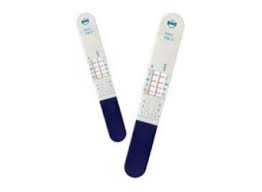The experience of having periods is like none other. There is simply so much that women have to deal with. There is firstly PMS to contend to, which is anything but pleasant. Your mood is bad, you are in pain, there is bloating and crying and just so much lethargy.
Then the periods start and bring their own set of problems. The flow is too much, you constantly have to check for leakage, you don’t want to go in the public loos, but you do have to change amid cramp pain. However, the most pressing question perhaps is what period paraphernalia to use.
There is a limited range of feminine hygiene products that you can utilize to get through the periods.
While most women prefer tampons and pads, many have started to look for other options, especially those who have a heavy flow, as constant changing can be a nightmare. However, if you have an abnormally high flow, then you need to visit your gynecologist.
A popular choice for women with flow problems is menstrual cups.
What are menstrual cups?
These are tiny cups that are inserted into the vagina. They are available in different sizes to accommodate different body sizes. The size of the cup also depends on the age and whether you have given birth vaginally or not.
Moreover, they can be placed anywhere along the vagina –closer to the cervix to deeper within. These cups hold the blood and then are periodically emptied.
Putting in the cup
Putting the cup in and taking it out is a bit of trial and error. You can work with your gynecologist as well in figuring out a game plan. Make sure to carefully read the instructions on your cup in place.
Benefits of the cup
Good for environment
Many pads and tampons have plastic in them, so they are non-biodegradable. On the contrary, one cup can last for around 10 years. That is 10 years’ worth of pads and tampons; imagine how much less waste you are producing.
Inexpensive
Menstrual cups are reusable and are not so expensive, to begin with. Since it lasts super long, hence, you don’t have to buy it repeatedly every month, saving you a lot of money as a result.
Leakage
If you have the cup incorrectly in place, then you also do not have to worry about leakages, something that is common with pads and can cause quite a lot of embarrassment.
No constant changing
Unless your flow is high, you only need to empty out your cup after every 12 hours. This then saves you the hassle of constantly changing.
Moreover, even for those with high flow, using cups is more convenient as opposed to tampons or pads.
Safer
Some women can forget to remove their tampons and pads, which poses a great and grave risk of toxic shock syndrome. From death to organ damage, the danger of the infection runs great.
With menstrual cups, there is no danger of toxic shock syndrome, as they do not absorb the blood but store it.
Pitfalls of using the cup
Placing and taking out can be hard
Placing the cup can be tricky and inconvenient. Similarly, taking it out can also cause problems and spillage.
Too much trial and error
Unlike pads which are very convenient to use, cups require too much trial and error. Finding the right brand, the right size, the right fit, the right technique can take a lot of energy.
Lead to vaginal irritation
There can be vaginal irritation on account of the menstrual cups, especially when not used properly. You might also experience discomfort with the use of cup, therefore requiring a lubricant
Chances of infection
There is also the chance of vaginal irritation if the cups are not cleaned properly, meriting a visit to the Best Gynecologist in Karachi then.





